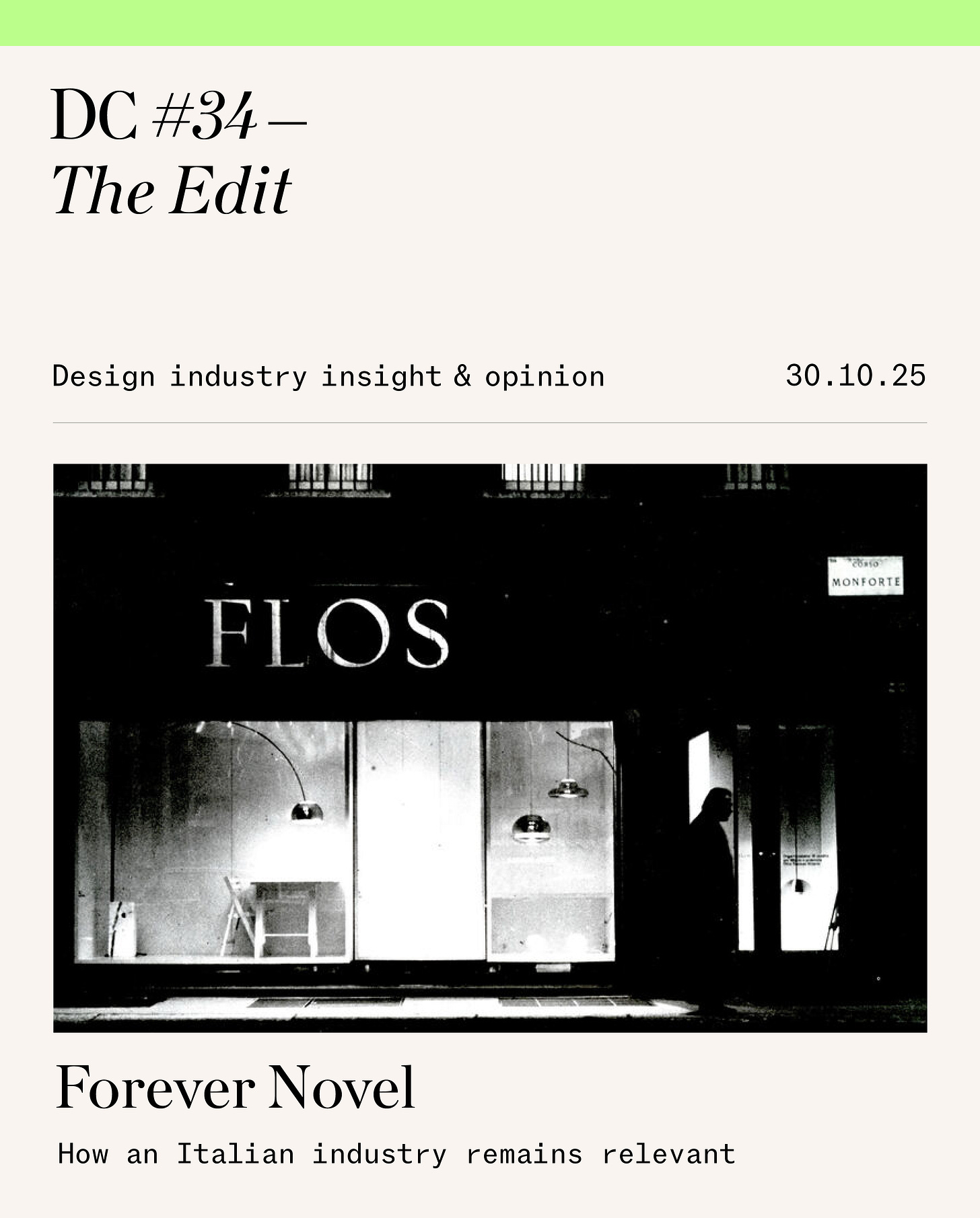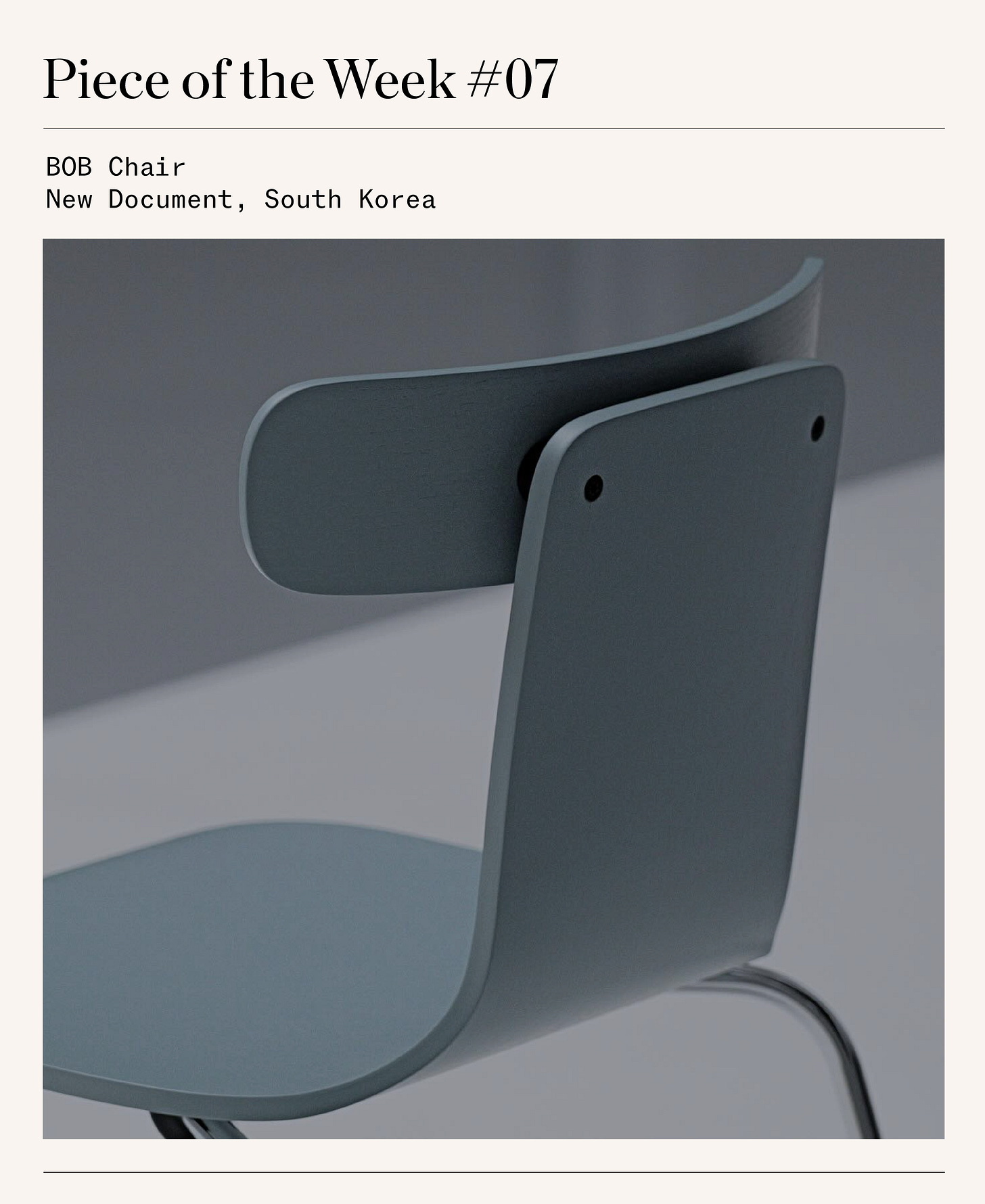Design Considered #34 - The Edit
Classic Italian furniture, the case for graphic design as an art form, and more...
#01 - Opening Thought
A few terms used by marketers in the Italian furniture industry don’t translate so well into English. Novelties — borrowed from the much lovelier novità and used by brand reps to describe their latest collections — is one of them. Novelties wear off, but recently catching up with old collaborators in Italy’s fine furnishing world, I was reminded how design companies here remain novel in the grandest sense.
Lighting specialist Flos, for example, has held its retail post on Milan’s well-heeled Corso Monforte since the 1960s (pictured: display designed by Achille Castiglioni), and the wares in its windows feel as contemporary today as they did at the time of that first installation over half a century ago. With a knack for introducing pieces by new talent into their catalogues alongside reproductions from the legendary likes of Castiglioni and company, the top furniture and fixtures brands in Italy continue to project freshness while remaining (to use another clumsy English word) classic.
It works — in my career, I’ve watched these firms conquer the global spend of interior designers and developers seeking to serve the most refined sense of luxury, first across Asia and now throughout the Middle East. Next month, Salone del Mobile.Milano (the world’s foremost furniture fair, founded in Milan in 1961 and long the industry’s measure of taste) holds a landmark debut in Riyadh — another novel move that further cements Italy’s place at the centre of global design culture.
#02 - For Your Consideration
In the digital world, your website is the only real estate you truly own and have dominion over, so making it a good one is worth the effort. This is the argument made by international design practice Studio Koto in its OFF Brand newsletter, through a well-written manifesto on why websites still - and always will - matter.
At its worst, graphic design is simply advertising; at its best, it’s art. This New York Times article on the designs of Vasilis Marmatakis - the talent behind the film posters for Yorgos Lanthimos’s catalogue, most recently Bugonia - proves this idea. Properly conceptual work that is a true act of collaboration, this showcase is a study in best practice for any creative professional.
Continuing with good graphic design - Matt Willey’s Pentagram case study for SCENARIO - a Chinese textile brand with a craft-led focus - shows how a modular wordmark, a strict grid and custom characters can carry clarity without shouting.
Good design needs good visuals, and there aren’t many backdrops as handsomely formed for a film shoot as modernist architect Arne Jacobsen’s Bellevue Teatret outside Copenhagen, Denmark. Here, Georg Jensen, the heritage brand that straddles the art of silver design for home wares and fashion, highlights its jewellery in a campaign worth repeated viewing.
The Holcim Foundation Awards showcase the best sustainable design projects, selected by the industry’s smartest. The Awards’ jury roster (whose regional chairs include architects Lina Ghotmeh, Sou Fujimoto, Jeanne Gang, Sandra Barclay and Kjetil Thorsen) proves that when credibility is curated, best-in-class rises to the top, as seen in the Awards’ recently announced 20 winning projects.
#03 - Design Selection
Koreans tend to be serious about their work culture, so a seriously well-designed set-up for commercial pursuits makes sense. New Document is a relatively new office furniture firm founded in 2023 in Seoul, with a mission to propose “the next office culture” through minimalist yet characterful pieces. The stackable BOB Chair, made from mint-painted ash timber with metal legs and designed by Studio PESI, perfectly complements the Chamfer Desk, created by the same Korean outfit. Alongside a growing collection of New Document furniture, BOB makes an equally fine addition to a smart home office or the well-appointed studio of an enterprising firm.
While its pieces are resolutely contemporary, New Document’s brand image hints at a more cinematic aesthetic. Its retro-futuristic approach to both design and visual promotion recalls the idiosyncratic cubicle culture of the 1990s — almost making you want a Sharp fax machine and an Armani power suit to complement your new office furnishings.





